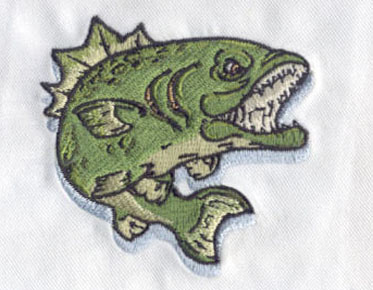10 Ways to Improve Your Towel Embroidery Skills| Eagle Digitizing
Towel embroidery is a popular technique
that adds a personal touch to everyday items. Whether you’re a beginner or an
experienced embroiderer, there’s always room for improvement when it comes to
towel embroidery. In this article, we’ll share 10 ways to improve your towel
embroidery skills. If this post spurred your interest and you want to find out
more about embroidery digitizing,
please feel free to contact us.
Choose the right type of towel
The type of towel you choose will affect the outcome of your embroidery. Look for towels made from high-quality materials such as cotton or linen, as these fabrics tend to hold embroidery stitches well. Avoid towels with rough or textured surfaces, as they can make it difficult to create clean, smooth lines.
Use the right stabilizer
A stabilizer is a material that’s placed underneath the fabric to provide support and prevent distortion during embroidery. The type of stabilizer you use will depend on the fabric and the design you’re working on. For towels, it’s best to use a tear-away stabilizer that can easily be removed after embroidery is complete.
Choose the right needle
The needle you use will also affect the outcome
of your embroidery. For towels, it’s best to use a sharp, fine needle with a
small eye. A 75/11 or 80/12 needle is typically suitable for most towel
embroidery projects.
Use the right thread
Choose a high-quality embroidery thread that’s appropriate for the fabric you’re working on. Cotton or polyester threads are suitable for most towel embroidery projects. Be sure to match the thread color to the design you’re working on.
Hoop your towel properly
Proper hooping is essential for achieving clean, even embroidery on towels. Make sure the towel is taut and evenly stretched in the hoop. Avoid hooping the towel too tightly, as this can cause distortion and puckering.
Use a light touch
When embroidering on towels, it’s important to use a light touch. Avoid pulling or tugging on the fabric, as this can cause distortion and puckering. Instead, use a gentle, flowing motion to create smooth, even stitches.
Use a design that’s suitable for towels
Not all embroidery designs are suitable for towels. When choosing a design, look for something that’s relatively simple and doesn’t have too many intricate details. Designs with large, bold lines tend to work best on towels.
Practice your technique
Practice makes perfect when it comes to embroidery. Set aside some time each day to practice your technique on a scrap piece of fabric. This will help you improve your skills and build confidence in your abilities.
Experiment with different stitches
There are many different embroidery stitches you can use on towels. Experiment with different stitches to create different textures and effects. Some popular stitches for towel embroidery include satin stitch, chain stitch, and stem stitch.
Pay attention to the details
Finally, pay attention to the details when
embroidering on towels. Take the time to ensure that each stitch is neat and
even. Check for any loose threads or mistakes, and make any necessary
adjustments before moving on to the next section.
By following these 10 tips, you can improve
your towel embroidery skills and create beautiful, personalized towels that
you’ll be proud to use and display. Remember to take your time, practice
regularly, and have fun with your embroidery projects.



